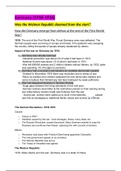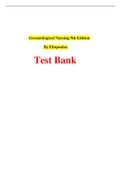Samenvatting
Summary Bazerman & Moore, 2013. Judgment in Managerial Decision Making (grade 9)
- Instelling
- Vrije Universiteit Amsterdam (VU)
Summary of chapter 1-12 Bazerman & Moore, 2013. Judgment in Managerial Decision Making, Wiley, 8th edition, Chapters 1-12.
[Meer zien]














